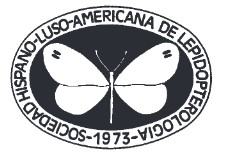Application of remote sensing to the quantification of defoliation caused by Lymantria dispar (Linnaeus, 1758) in the “Los Alcornocales” Natural Park (Cadiz, Spain) (Lepidoptera: Erebidae)
DOI:
https://doi.org/10.57065/shilap.526Keywords:
Lepidoptera, Erebidae, Lymantria dispar, NDMI, imagen satellite, Landsat, Cadiz, SpainAbstract
The extent and severity of defoliation caused by Lymantria dispar (Linnaeus, 1758) in “Los Alcornocales” Natural Park in the first half of the 90s is calculated using Landsat-4 images from 1990 to 1998. Forest damage was quantified through differences in Normalized Difference Moisture Index (NDMI) of images from the years with defoliation (1994 and 1995) and the years before defoliation (1990 to 1993). The results obtained show a similar pattern in the distribution of damage with other studies, where the areas with the highest degree of defoliation are found around urban areas
Downloads
Global Statistics ℹ️
|
257
Views
|
261
Downloads
|
|
518
Total
|
|
References
Castedo-Dorado, F., Lago-Parra, G., Lombardero, M. J., Liebhold, A. M., & Álvarez-Taboada, M. F. (2016). European gypsy moth (Lymantria dispar dispar L.) completes development and defoliates exotic radiata pine plantations in Spain. New Zealand Journal of Forestry Science, 46, 18. DOI: https://doi.org/10.1186/s40490-016-0074-y
Choi, W. I., Kim, E. S., Yun, S. J., Lim, J. H., & Kim, Y. E. (2021). Quantification of One-Year Gypsy Moth Defoliation Extent in Wonju, Korea, Using Landsat Satellite Images. Forests, 12, 545. DOI: https://doi.org/10.3390/f12050545
Cocco, A., Cossu, A. Q., Erre, P., Nieddu, G., & Luciano, P. (2010). Spatial analysis of gypsy moth populations in Sardinia using geostatistical and climate models. Agricultural and Forest Entomology, 12, 417-426. DOI: https://doi.org/10.1111/j.1461-9563.2010.00488.x
De Beurs, K., & Townsend, P. (2008). Estimating the effect of gypsy moth defoliation using MODIS. Remote Sensing of Environment, 112, 3983-3990. DOI: https://doi.org/10.1016/j.rse.2008.07.008
JUNTA DE ANDALUCÍA(2013). Plan de lucha integrada contra la lagarta peluda Lymantria dispar (Linnaeus, 1758) en la Comunidad Autónoma de Andalucía. Consejería de Medio Ambiente y Ordenación del Territorio.
JUNTA DE ANDALUCÍA (2018). II Plan de Desarrollo Sostenible. Parque Natural de Los Alcornocales y su área de influencia socio-económica. Consejería de Medio Ambiente y Ordenación del Territorio.
Jurado, V. (2002). Los bosques de la Sierras del Aljibe y del Campo de Gibraltar: (Cádiz - Málaga): Ecología, transformaciones históricas y gestión forestal. Consejería de Medio Ambiente (Junta de Andalucía).
Justicia, I., Soto, A., Martínez González, M., & Pérez-Laorga, A. (2007). Distribución y abundancia de Lymantria dispar (Linnaeus, 1758) (Lepidoptera: Lymantriidae) en las principales masas de carrasca Quercus ilex (L.) subsp. rotundifolia (Lam.) y alcornoque Quercus suber (L.) de la Comunitat Valenciana. Boletín de Sanidad Vegetal, 33, 491-502.
Mundet, R., Baiges, T., Beltrán, M., & Torrell, A. (2018). Guía de recomendaciones y medidas de adaptación al cambio climático en la gestión de Quercus suber. Proyecto Life+SUBER.
Pasquarella, V., Elkinton, J., & Bradley, B. (2018). Extensive gypsy moth defoliation in Southern New England characterized using Landsat satellite observations. Biological Invasions, 20, 3047-3053. DOI: https://doi.org/10.1007/s10530-018-1778-0
Pasquarella, V., Mickley, J., Barker Plotkin, A., Maclean, R., Anderson, R., Brown, L., Wagner, D., Singer, M., & Bagchi, R. (2021). Predicting defoliator abundance and defoliation measurements using Landsat-based condition scores. Remote Sensing in Ecology and Conservation, 7(4), 592-609. DOI: https://doi.org/10.1002/rse2.211
Reyes, P., & Burdett, E. (2019). Evolución de la cobertura forestal en los alcornocales próximos al estrecho de Gibraltar a través del índice de vegetación EVI. Ecosistemas, 28(3), 73-80. DOI: https://doi.org/10.7818/ECOS.1787
Rullan-Silva, C., Olthoff, A., Delgado De La Mata, A., & Pajares- Alonso, J. (2013). Remote monitoring of forest insect defoliation. A review. Forest Systems, 22(3), 377-391. DOI: https://doi.org/10.5424/fs/2013223-04417
Stefanescu, C., Soldevila, A., Gutiérrez, C., Torre, I., Ubach, A., & Miralles, M. (2020). Explosions demogràfiques de l’eruga peluda del suro, Lymantria dispar (Linnaeus, 1758), als boscos del Montnegre el 2019 i 2020: possibles causes, impactes i idoneïtat dels tractaments per combatre la plaga. Butlletí de la Institució Catalana d’Història Natural, 84, 267-279.
Tardà, A., Corbera, J., & Riera R. (2020). Estudi de l`àrea d´afectació de l´eruga peluda del suro al massís del montnegre a partir d’imatges sentinel-2. Institut Cartogràfic i Geològic de Catalunya.
Tiberi, R., Branco, M., Bracalini, M., Croci, F., & Panzavolta, T. (2016). Cork oak pests: a review of insect damage and management. Annals of Forest Science, 73, 219-232. DOI: https://doi.org/10.1007/s13595-015-0534-1
Townsend, P., Singh, A., Foster, J., Rehberg, N., Kingdon, C., Eshleman, K., & Seagle, S. (2012). A general Landsat model to predict canopy defoliation in broadleaf deciduous forests. Remote Sensing of Environment, 119, 255-265. DOI: https://doi.org/10.1016/j.rse.2011.12.023
Downloads
Published
How to Cite
Issue
Section
License

This work is licensed under a Creative Commons Attribution 4.0 International License.
The author SS retains his trademark and patent rights to any process or procedure within the article.
The author retains the right to share, distribute, perform and publicly communicate the article published in SHILAP Revista de lepidopterología, with initial acknowledgement of its publication in SHILAP Revista de lepidopterología.
The author retains the right to make a subsequent publication of his work, from using the article to publishing it in a book, provided that he indicates its initial publication in SHILAP Revista de lepidopterología.
Each submission to SHILAP Revista de lepidopterología must be accompanied by an acceptance of copyright and acknowledgement of authorship. By accepting them, authors retain copyright of their work and agree that the article, if accepted for publication by SHILAP Revista de lepidopterología, will be licensed for use and distribution under a "Creative Commons Attribution 4.0 International" (CC BY 4.0) licence that allows third parties to share and adapt the content for any purpose giving appropriate credit to the original work.
You may read here the basic information and the legal text of the license. The indication of the CC BY 4.0 License must be expressly stated in this way when necessary.
As of 2022, the content of the print and digital version is licensed under a "Creative Commons Attribution 4.0 International License" (CC BY 4.0), licence that allows third parties to share and adapt the content for any purpose giving appropriate credit to the original work.
Previous content in the journal was published under a traditional copyright licence; however, the archive is available for free access.
When using the contents of SHILAP Revista de lepidopterología published before 2022, including figures, tables or any other material in printed or electronic format belong to the authors of the articles, the authors must obtain the permission of the copyright holder. Legal, financial and criminal liabilities in this respect belong to the author(s).
In application of the Principle of Priority of the International Code of Zoological Nomenclature, no other version than the one published by the publisher may be deposited in repositories, personal websites or similar.





























